Popular games for platform Sega Master System/Mark III
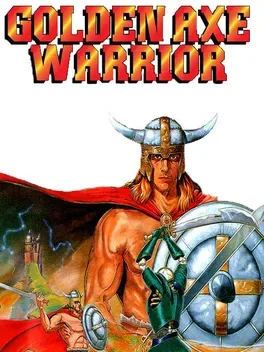
World peace is at stake! Death Adder, a wicked giant, has stolen the nine crystals from the kingdom of Firewood and has hidden them in nine labyrinths that he has created. These nine magic crystals protected the people from evil – especially from Death Adder's grasp. But now that the crystals are lost, the world is defenseless! Someone must put an end to the fiend's realm of darkness, death and destruction! Do you have what it takes to bring back peace and happiness? Trek through deep, dark forests and sail across vast, stormy seas. Chop down trees with your Battle Axe and move rocks with your magic spells to find secret caves. When you take on Death Adder's gruesome monsters, think only of winning – or else you won't find the nine crystals. And when you do, you'll find the Golden Axe – the only weapon that can crush Death Adder!

Take to the streets or take to the skies. Because Action Fighter is the incredible, transformable combat vehicle. You start out on a customized cycle. Built with enough speed and power to jump over water and overtake enemies. Then, by finding the right parts along the way, you'll change your cycle into a supercharged, state-of-the-art sports car. Next, add two turbojets to make your car airborne. And take to the skies. Down hyped-up helicopters and jet spaceships from above. And no matter which vehicle you're manning- or who you're after- get ready to stand by for action!
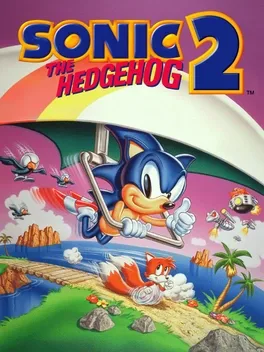
This is a completely different game than its 16-bit counterpart on the Genesis/Mega Drive, and was originally released on the Sega Game Gear and Master System. The Sonic the Hedgehog 2 game marks the debut of Miles ‘Tails’ Prower, Sonic’s best pal, who is then seen recurring in the series. Assist Sonic to rescue Tails, who has been kidnapped by Dr. Robotnik in this platform video game. In exchange of Tails’ safety in this Sega Game Gear video game, the evil scientist asks that the six Chaos Emeralds be given away to six robots, so he can dominate the entire globe. With advanced ability of Sonic to smash through walls and grab back scattered rings hit by enemy, this platform video game is made even more exciting. Join the protagonist in the Sonic the Hedgehog 2 game as he rides a mine cart, a hang glider or skims through water surface in his rescue attempt. With seven zones and three acts each, this Sega Game Gear video game is a rollercoaster ride where you get rewarded at the end of each act.
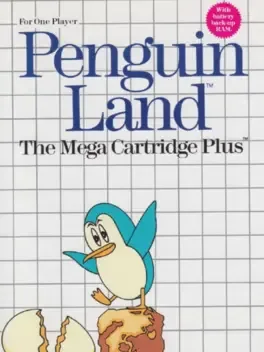
Penguin Land, known as Doki Doki Penguin Land Uchū Daibōken (どきどきペンギンランド宇宙大冒険? lit. "Thump Thump Penguin Land: Great Outer Space Adventure") in Japan, is a Sega Master System game and the second game in the Doki Doki Penguin Land series. In this game you play as a penguin going through a puzzle platformer stage and try to guide your egg around the polar bears, rocks and other hazards to the end of the stage. The game has a total of 50 stages and a level editor which can save up to 15 additional levels. The level editor data is stored on the game's battery back-up RAM.
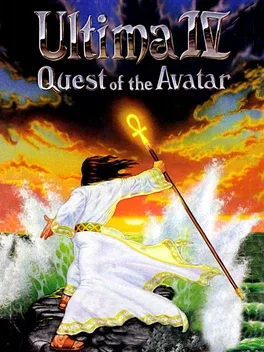
Following the defeat of the evil triad in the previous three Ultima games, the world of Sosaria changed beyond recognition: continents rose and sank, and new cities were built, heralding the advent of a different civilization. Unified by the reign of the benevolent monarch Lord British, the new world was renamed Britannia. Lord British wished to base people's well-being on the ethical principles of Truth, Love, and Courage, proclaiming the Eight Virtues (Honesty, Compassion, Valor, Justice, Sacrifice, Honor, Spirituality, and Humility) as the ideal everyone should strive for. The person who could accomplish full understanding and realization of these virtues would serve as a spiritual leader and a moral example for the inhabitants of Britannia; he alone would be able to obtain holy artifacts, descend into the Stygian Abyss, and access the Codex of Ultimate Wisdom. This person is the Avatar. The fourth game in the Ultima series features an improved game engine, with color graphics and enhanced character interaction: the player can have conversations with non-playable characters by typing names of various topics. However, the main difference between Ultima IV and its predecessors in the series (as well as other role-playing games) lies in the game's objectives and the ways to fulfill them. Instead of building up a character by any means possible in order to face a villain in the end of the game, in Ultima IV the player is trying to become the Avatar, a role model for people. This means upholding the Eight Virtues, basically trying to become a better person. Making morally conscious decisions and helping other people is not done expecting a material reward, but because it is the actual goal of the game and the main focus of its gameplay. The game frowns on behavior typical of most other RPGs, such as backstabbing fleeing enemies or picking up everything that isn't nailed down even if it does not belong to the protagonist. This different approach established the game's reputation as the first "true" Ultima, influencing the design philosophy of later installments and the overall spirit of the series. Character creation is done by choosing responses to morally ambiguous questions. Each of the Eight Virtues corresponds to a character class; by determining the player's personal priorities in the virtues, the game assigns a class and a starting location for the Avatar. After emerging in Britannia, the player is free to explore it in various ways (on foot, moongate teleportation, on horseback, by ship, etc.). Certain items must be collected in any order to enter the Stygian Abyss and complete the game. The Avatar also has to reach the highest level in all virtues. This is achieved by various means: donating blood increases Sacrifice, not fleeing from combat increases Valor, etc. The process, however, is not irreversible: should the Avatar overpay a blind seller, he gains Compassion points; should he, on the other hand, cheat the seller by underpaying, his level in several virtues would decrease. These unorthodox features of the game co-exist with plenty of traditional RPG elements, such as dungeons to explore and hostile monsters to kill. Enemies are encountered on the world map as well as in dungeons; combat takes place on separate top-down screens, allowing player-controlled and enemy parties freely move on them. Characters accumulate experience points and level up, gaining higher amount of hit points and access to stronger magic spells. Like in the previous installments of the series, world map, town exploration and combat are presented from a top-down view, while the dungeons are pseudo-3D and are explored from first-person perspective. Ultima IV also introduces several new gameplay features to the series and role-playing games in general. A number of initially non-playable characters living in various areas of the game world are able to to join the party and fight alongside the hero, replacing traditional player-generated characters or mercenaries and adventurers available only in special locations. Additional new elements include buying and combining reagents in order to cast spells, puzzle rooms in dungeons, and others. The FM Towns version, while identical to the others in gameplay, introduces upgraded graphics similar to those used in next installment of the series.
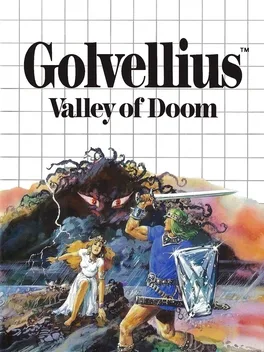
Enter the world of Golvellius. Where demons rule the valley of water...and control the creatures of land, sea and air. Where almost everyone stands against you. There is only one way in...and no way out except victory or death! It's an adventure that will take you across deserts and mountains, oceans and forests...through eerie graveyards and caves filled with danger and surprise. Golvellius has a PASSWORD SAVE feature that lets you keep all your possessions. So you never have to start an adventure empty handed!
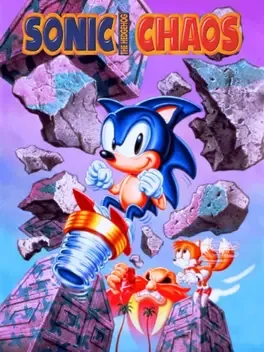
Dr. Robotnik has stolen the Red Chaos Emerald, causing the other five to "lose balance" and scatter themselves into a parallel universe. As a result of the instability, South Island is now sinking into the ocean. It is up to Sonic and Tails to find the Chaos Emeralds and restore harmony to the universe, or else the innocent residents of South Island will find themselves taking a long swim.
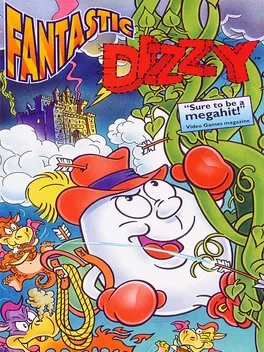
Dizzy is an egg living in a world of magic and fantasy. The basic concept of the game is to move around the world, finding various items and collectibles, and to use them in the right locations. Dizzy has no special skills or abilities, save for his remarkable feats of somersaulting, and must solve all problems he faces with the clever use of one or more items.
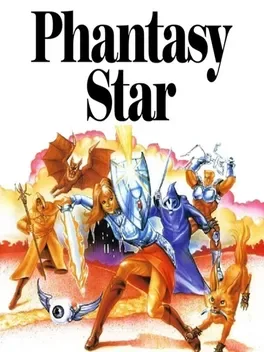
The time: Space Century 3240. The place: The Algol Star System. It began when King Lassic turned evil and let hordes of hideous, magical creatures run amok on the three planets. When her brother was killed, Alis vowed to avenge his death and put an end to Lassic forever. Join her in a journey across time and space to worlds where creatures speak...where magic and science combine to take you on the ultimate video quest. Phantasy Star is total adventure role playing with towns full of people and shops...16 level dungeons full of traps and treasure...three companions who will help you if you find them and some of the most awesome graphics ever put in a video game.
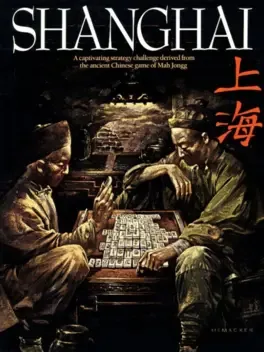
Shanghai is a computerized version of mahjong solitaire. After winning a game, the tiles reveal the three-dimensional blinking eye of a dragon behind the game screen. The Macintosh and Sega Master System version shows an animated dragon spitting fire.
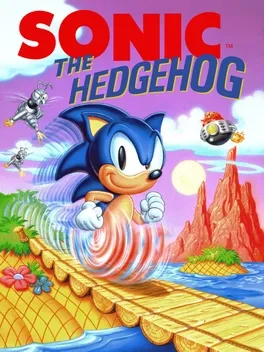
This is a completely different game than its 16-bit counterpart on the Genesis/Mega Drive, and was originally released on the Sega Game Gear and Master System. To stop the evil Dr. Robotnik, Sonic must traverse six zones consisting of three levels each. Most of the zones are based on those in the original game, but some are entirely new, including a jungle environment and a huge airship. Other unique differences are one level that scrolls automatically and one that is aligned vertically instead of horizontally. Most of the enemies (mechanized animals, defeated by Sonic's spikes when jumping or rolling) and power-ups (speed-ups, shields, extra lives) are the same as in the Genesis version as well. Sonic can pick up golden rings for protection (when hit, he simply loses all of his rings instead of a life) and bonuses: 100 rings gain Sonic an extra life, and 50 remaining rings at the end of a level allow access to pinball-themed special stages full of bumpers and springs. The final level of a zone is always a boss fight against Robotnik. Some of the boss fights differ in the Master System and Game Gear versions of the game, with special designs for the handheld version due to the smaller visible screen area. Sonic should also collect the six Chaos Emeralds to keep them from falling into Robotnik's hands. In a departure from the original game, these are not hidden in the special stages but somewhere in the regular levels.
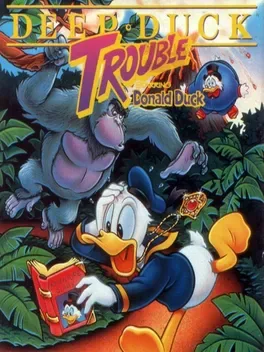
Uncle Scrooge found a magical necklace on a mysterious island, but the necklace put a curse on him. Now Uncle Scrooge is doomed to float around in the air forever! (Of course Donald always said Scrooge was full of hot air anyway!) To take the curse off Uncle Scrooge, Donald has to take the necklace back to the island. But there's plenty of danger awaiting Donald there. How about lending him a hand?
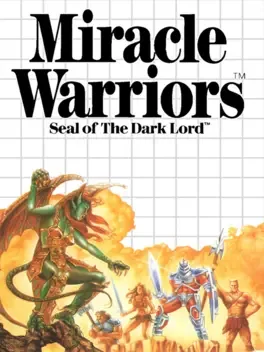
Japanese RPG. Two editions exist, one for the MSX1 on cartridge, and one for the MSX2 on 3.5" diskette. The seal of the Dark Lord Terarin has been broken and Terarin has been unleashed into the world again. She has stolen the Golden Seal and opened pandora's box, unleashing evil creatures into the world. A young hero is tasked by a king to stop Terarin. He must step into footsteps of Iason, a shepherd that once accidentally unleashed Terarin and fought to seal the Dark Lord again. The hero must enlist the aid of three companions, Guy the warrior, Medi the amazon and Treo the pirate (called Turo in the manual) and find the three keys to Terarin's lair. To face the Dark Lord, they must find the mystical weapons and armor of old and then defeat Terarin and seal the Dark Lord from the world.
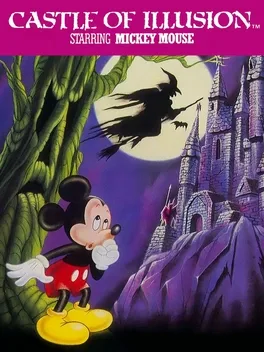
To save his girlfriend Minnie from the wicked witch Mizrabel, Mickey must venture into the Castle of Illusion. Crossing six levels (including a magical forest, a toy land and a candy world), he must collect the gems of the rainbow in order to confront and defeat the witch. Each level features unique obstacles, enemies and a final boss. The enemies can be defeated by jumping on top of them. An alternative way is to pick up objects lying around (like rocks in the forest or blue balls in the toy level) and throwing them at the enemies. Mickey's ability to pick up things and carry them around also leads to some sort of puzzle-oriented gameplay. By placing objects in the right spot and jumping off of them, he can get to areas that are otherwise out of reach. In some levels, he also has to collect keys to open doors. A unique type of object is the treasure chest - by jumping on top of one or throwing it, Mickey gets access to its contents, which might include extra lives, a health power-up or coins to collect for points.
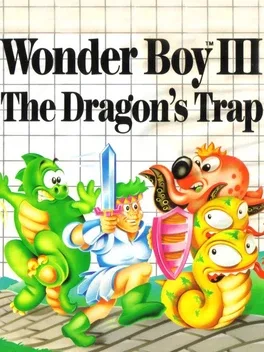
A direct sequel to Wonder Boy in Monster Land, you wander through the lands using multiple forms that each have different abilities. Each defeated boss unlocks a new form that has to be used to advance to a new area, while shops give you access to new equipment for money.
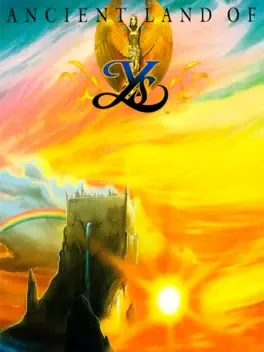
The hero of Ys is an adventurous young swordsman named Adol Christin. As the story begins, he has just arrived at the Town of Minea, in the land of Esteria. He is called upon by Sara, a fortuneteller, who tells him of a great evil that is sweeping the land. Adol is informed that he must seek out the six Books of Ys. These books contain the history of the ancient land of Ys, and will give him the knowledge he needs to defeat the evil forces. Sara gives Adol a crystal for identification and instructs him to find her aunt in Zepik Village, who holds the key to retrieving one of the Books. With that, his quest begins.
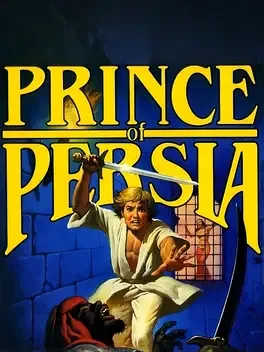
The Sega Game Gear and Sega Master System/Mark III port of Prince of Persia.
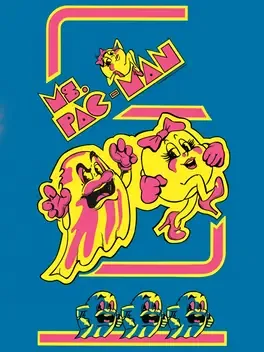
In 1982, a sequel to the incredibly popular Pac-Man was introduced in the form of his girlfriend, Ms. Pac-Man. This sequel continued on the "eat the dots/avoid the ghosts" gameplay of the original game, but added new features to keep the title fresh. Like her boyfriend, Ms. Pac-Man attempts to clear four various and challenging mazes filled with dots and ever-moving bouncing fruit while avoiding Inky, Blinky, Pinky and Sue, each with their own personalities and tactics. One touch from any of these ghosts means a loss of life for Ms. Pac-Man. Ms. Pac-Man can turn the tables on her pursuers by eating one of the four Energizers located within the maze. During this time, the ghosts turn blue, and Ms. Pac-Man can eat them for bonus points. The Energizer power only lasts for a limited amount of time, as the ghost's eyes float back to their center box, and regenerate to chase after Ms. Pac-Man again. Survive a few rounds of gameplay, and the player will be treated to humorous intermissions showing the growing romantic relationship between Pac-Man and Ms. Pac-Man, leading all the way up to the arrival of "Junior".
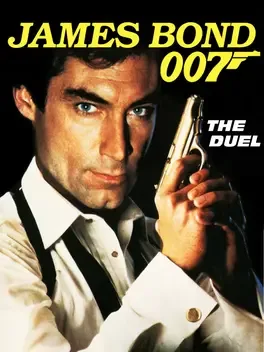
The Duel is a James Bond video game released for the Sega Master System, the Sega Game Gear, and the Sega Mega Drive / Genesis. The game was developed and published by Domark and released in 1993. Armed with a pistol, the player controls James Bond through various side-scrolling enemy bases to rescue female hostages and arm a bomb placed at a strategic point to destroy the base. Along the way, Bond must battle numerous thugs and familiar bosses. The game is notable among Bond games for a number of reasons. Although it was released 4 years after Timothy Dalton's last outing as James Bond, his likeness is used in the game, most notably the opening screens, thus making it Dalton's last appearance in a Bond game to date. It was also the final Bond game to be released by Domark. It was also the first Bond game not to be directly based on a movie or novel. Instead it featured an original storyline, albeit one featuring familiar villains including Jaws and Oddjob. Though the game's storyline was not its strong point, it did blaze a trail for future licence-holders EA, half of whose Bond output would be based on original storylines. One previous Bond game, Operation Stealth, included an original storyline but the game was originally based on a generic Bond-style character named John Glames and only had the licence added for its North American release.
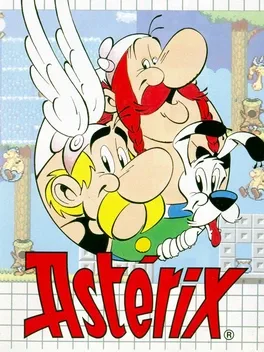
The Romans have kidnapped Getafix, who is the only one that can brew the magic potion the Gauls need to stand against the Romans. Asterix and Obelix embark on a journey to free him. You can play as either Asterix or Obelix which play slightly differently (Obelix is slower, but can manipulate objects, Asterix moves faster).

Ninja Gaiden for Sega Master System was released in 1992 by SEGA. It is a different game from homonym NES game.
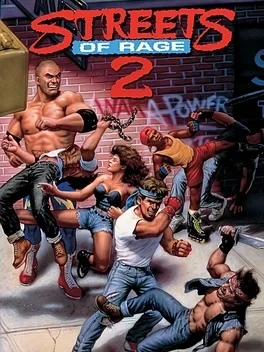
The 8-bit port of Streets of Rage 2, originally released for the Game Gear.
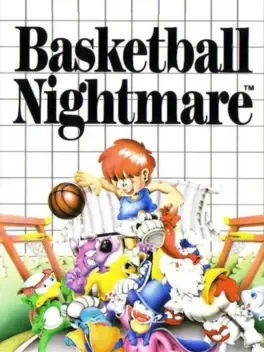
Basketball Nightmare is a basketball game where the player plays basketball against strange humanoid creatures on the court where the creature lives. The player must play and defeat each creature before moving onto a new place with a new harder opponent. The player starts of playing against Wolfs in the Forest and then, upon defeating that opponent, moves on to play Frogs at the Pond, One Eyed Aliens at the Waterfall, Vampires in the Skeleton Cave, Geishas in the Bamboo Forest, before finally playing against Samurais at the Shrine. If the player loses a match then that match can be replayed until won. The player at the start of each match gets to pick how long the match duration is out of the options of 15, 30, or 45 minutes (not in real time) before being placed on the court. When on the court the player always plays towards the right of the court. First the player tries to get the ball from a throw by a well timed button press. When the player has the ball the player has the option to move, pass the ball, and jump. When jumping the player can shoot, with the accuracy of the shot depending on the timing, or just simply pass. When defending the player can cycle through the field or just simply run into the opponent to challenge for the ball. There are a few penalties that the player can get including but not limited to Travelling (not passing after jumping), Charging (Sometimes called when the player with the ball runs into an opponent), and Pushing (Sometimes called when the player without the ball runs into an opponent) with all the penalties resulting with the other team getting the ball on the side of the court.
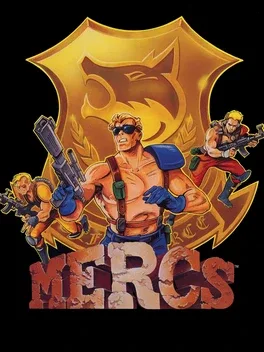
The players are members of a covert counter-terrorist team of mercenaries known as the "Wolf Force". The aim of the game was to rescue the former President from rebels in the fictional African country of Zutula, which bears resemblance to the apartheid regime in South Africa. The game has six main levels, plus the final level where your mission is to rescue the former U.S. president from the Hercules Transport. The game's arsenal include real-world machine guns, shot guns, flame throwers, and grenade launchers. Several missions even have pilotable vehicles available.